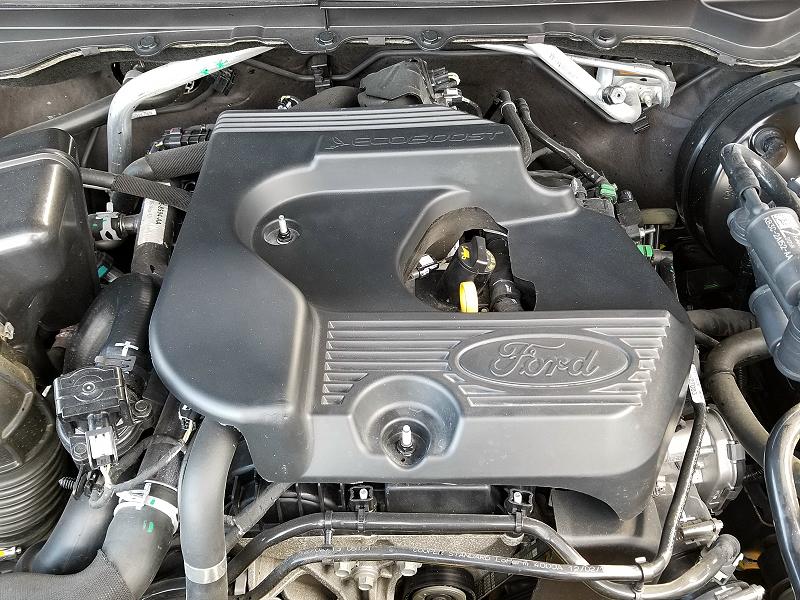Recognizing the Essentials of Car Engines: Types, Functions, and Functions
Summary of Vehicle Engines
A cars and truck engine serves as the heart of a vehicle, converting gas right into power to thrust it onward. This intricate system comprises numerous elements that operate in unison to ensure optimum efficiency and performance. The basic procedure of an auto engine entails the internal combustion process, where gas and air are mixed, sparked, and eliminated to produce power.
The engine's layout can considerably influence its efficiency, fuel effectiveness, and exhausts. Secret parts include the cylinder block, pistons, crankshaft, and camshaft, each playing an essential duty in the engine's overall feature. The cyndrical tube block houses the cyndrical tubes where burning takes place, while the pistons transform the eruptive energy from burning right into direct motion. This movement is then changed right into rotational power by the crankshaft, making it possible for the vehicle's wheels to turn.
Along with these components, engines commonly make use of various systems such as gas injection, ignition, and cooling systems to improve efficiency and longevity. Understanding the fundamental technicians of vehicle engines is necessary for doing and diagnosing issues upkeep, inevitably contributing to the lorry's dependability and performance over time.

Kinds Of Vehicle Engines
Automobile engines can be classified right into several types based on their design, fuel kind, and functional principles. 2.2 ford ranger engine. The most typical categories include interior combustion engines (ICE), electric engines, and crossbreed engines
Inner burning engines, which can be further split right into fuel and diesel engines, run by stiring up a fuel-air mixture to generate power. Gasoline engines are normally lighter and smoother, while diesel motor are more fuel-efficient and offer higher torque.
Electric engines use electrical energy stored in batteries to power an electrical motor, offering instant torque and absolutely no exhausts throughout operation. As technology breakthroughs, electrical cars (EVs) are significantly coming to be prominent for their ecological advantages and lower running expenses.
Crossbreed engines integrate components of both interior burning and electric engines, enabling for adaptable power sources and boosted fuel performance. They can operate in different modes, making use of either the gas engine, the electric motor, or both concurrently.
Each sort of engine has distinctive advantages and disadvantages, influencing their application in various car kinds and market segments, from portable automobiles to durable trucks. Comprehending these types is necessary for making notified choices regarding lorry choice and efficiency assumptions.
Engine Functions Clarified
Understanding engine features is critical for comprehending how cars operate efficiently. At the core of any type of internal burning engine exists the fundamental process of transforming gas into mechanical energy.
The ignition happens get more following, firing up the combination and developing a fast development of gases. This force drives the piston down during the power stroke, which inevitably translates right into the rotational movement of the crankshaft. The exhaust stroke after that expels the invested gases from the chamber, making method for a brand-new cycle to commence.
Along with these key functions, engines likewise integrate systems that take care of cooling and lubrication, guaranteeing ideal operational temperature levels and reducing rubbing in between moving components. This intricate interplay of features makes it possible for the engine to create the power required for vehicle propulsion while maintaining effectiveness and integrity. Comprehending these features provides important insight right into the complexities of vehicle engineering and boosts the capability to diagnose and attend to engine-related problems efficiently.
Key Engine Attributes
Engine style incorporates numerous crucial attributes that substantially influence sturdiness, performance, and effectiveness. Among one of the most important elements is the engine arrangement, which includes inline, V-type, and level designs. Each arrangement affects the engine's balance, dimension, and power outcome, thereby influencing total automobile characteristics.
One more vital function is the engine variation, referring to the total quantity of all cylinders. Bigger displacements commonly generate more power but might compromise fuel performance. Engine materials additionally play an essential function; high-strength and light-weight products, such as light weight aluminum and magnesium alloys, improve performance without adding excessive weight.
The sort of fuel shot system employed-- such as multi-port or direct injection-- influences burning effectiveness and exhausts. Turbocharging and supercharging are attributes that increase engine efficiency by forcing extra air right into the burning chamber, boosting power result without dramatically boosting engine size.
Finally, the presence of sophisticated engine management systems enhances fuel-air mixture and ignition timing, adding to smoother procedure and better gas economic climate. Jointly, these functions define an engine's abilities, establishing the structure for its efficiency and long life in an affordable automobile landscape.
Upkeep Tips for Engines
Correct check this engine maintenance is vital for ensuring ideal efficiency and longevity, as overlooking regular care can result in substantial concerns down the line. To preserve your engine efficiently, start click reference with normal oil modifications, usually every 3,000 to 7,500 miles, depending upon the type of oil utilized. Fresh oil lubricates engine parts, minimizing friction and wear.
Additionally, monitoring coolant degrees is vital to prevent getting too hot. Guarantee that the coolant is covered up and remains in good problem to keep reliable temperature level policy. On a regular basis check and replace air and gas filters, as clogged up filters can hinder air flow and gas shipment, endangering engine performance.
Furthermore, focus on ignition system and ignition systems. Malfunctioning or used ignition system can cause misfiring and minimized performance. Inspecting the battery terminals and links for deterioration is also essential, as a weak battery can impact engine beginning.

Conclusion
In summary, a thorough understanding of vehicle engines includes numerous kinds, features, and crucial attributes that dramatically affect car efficiency. Inner burning engines, along with electrical and hybrid alternatives, demonstrate varied devices for energy conversion. 2.2 ford ranger engine. Acknowledging the essential functions, such as intake and exhaust cycles, together with important engine features like setup and gas shot systems, equips cars and truck proprietors with the knowledge needed for efficient upkeep and procedure, eventually improving car longevity and performance
A vehicle engine offers as the heart of an automobile, converting fuel into mechanical energy to push it ahead. The essential operation of an automobile engine includes the interior combustion process, in which gas and air are blended, fired up, and gotten rid of to produce power.
Frequently replace and evaluate air and gas filters, as clogged up filters can hinder air flow and fuel shipment, jeopardizing engine performance. - 2.2 ford ranger engine
In recap, a comprehensive understanding of cars and truck engines includes numerous kinds, features, and crucial features that dramatically influence lorry performance. Identifying the vital features, such as intake and exhaust cycles, along with crucial engine attributes like setup and gas injection systems, furnishes vehicle owners with the expertise required for effective maintenance and procedure, eventually enhancing automobile longevity and performance.
 Jason J. Richter Then & Now!
Jason J. Richter Then & Now! Julia Stiles Then & Now!
Julia Stiles Then & Now! Melissa Sue Anderson Then & Now!
Melissa Sue Anderson Then & Now! Tina Louise Then & Now!
Tina Louise Then & Now! Christy Canyon Then & Now!
Christy Canyon Then & Now!